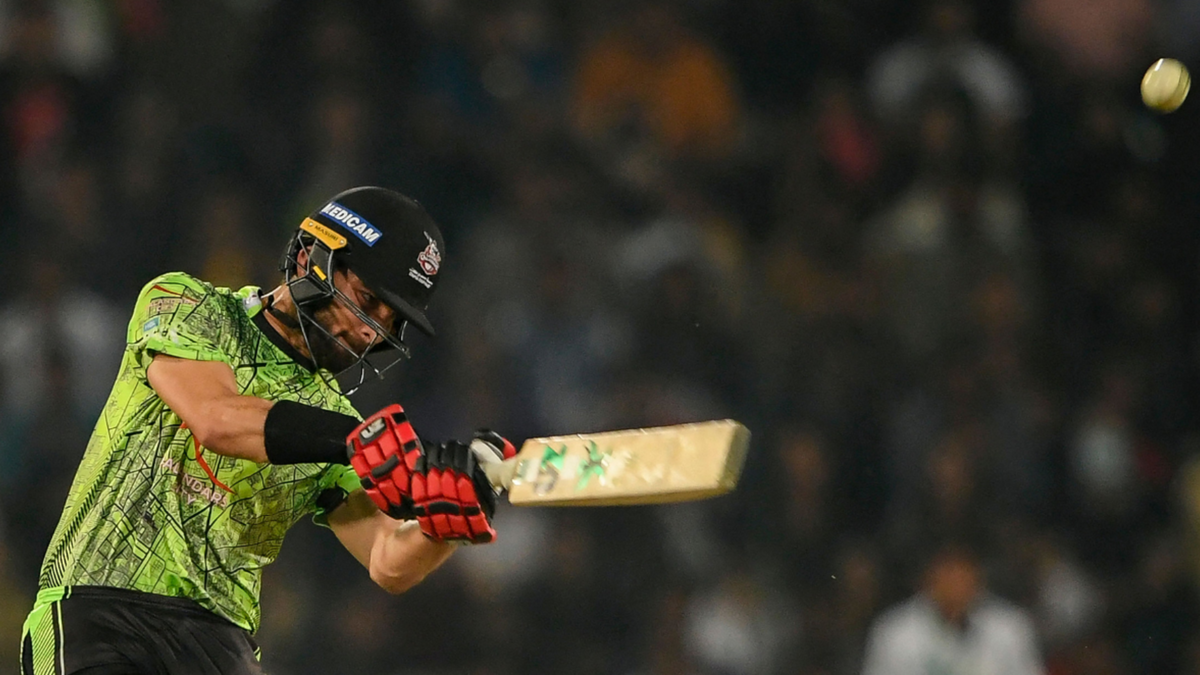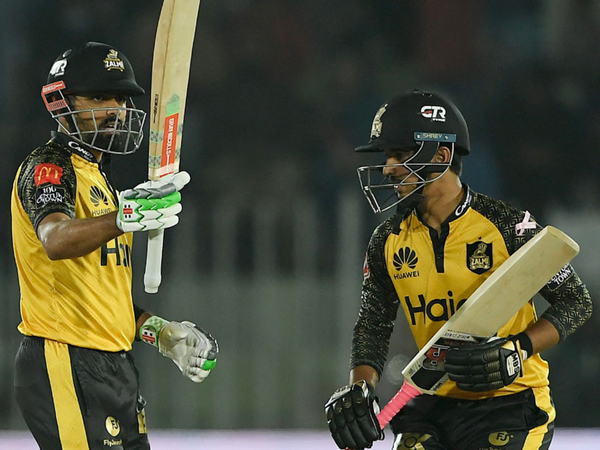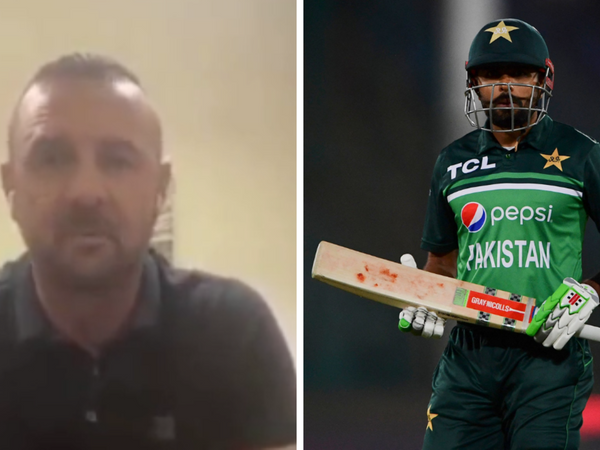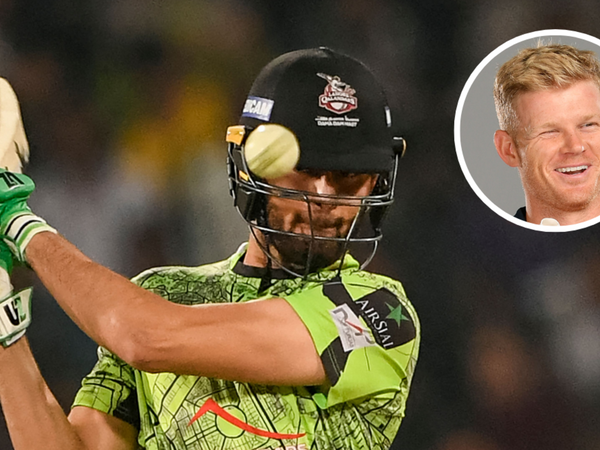
Shaheen Afridi has shown he can bat. A sudden improvement in his hitting abilities helped take Lahore Qalandars to another PSL title. Aadya Sharma wonders how far he can develop his newfound skill.
Let’s recap Shaheen Afridi’s batting numbers before they change for the better.
His highest score in international cricket is 19 (both in ODI and Tests). He has batted eight times in T20I cricket and hasn’t managed to score more than 16 on any occasion. The entirety of his Pakistan career has been spent batting between No.8 and No.11, barring a one-time appearance as night watchman at No.5 against South Africa, where he fell for a four-ball duck. The past presents no evidence of any real batting promise.
From PSL 2018 until 2022 his highest score was 12, and he had hit a total of two sixes in five editions. This year alone, he’s hit 11.
It’s not difficult to pinpoint when the switch flipped. In February, days before Shaheen got married to Shahid Afridi’s daughter, the two cricketers were seen facing each other in an open nets session at the Moin Khan Academy. “I was working on my power-hitting and batting with Lala”, Shaheen later said. It took no time at all for the results of that practice session to show.
When PSL 2023 came, Shaheen astonished all by hitting nearly 43 per cent of all his T20 runs. He began the tournament at No.9, but slowly crawled up the order – first to No.6, then back to No.9, before returning to six again. That changed things dramatically – he smoked a 36-ball 52 after a top-order collapse (21-4) in a 208-run chase and, while Qalandars fell short, the team had discovered an able power-hitter.
He wasn’t instantly convincing. Before he hit the groove in that innings to reach his maiden fifty, Shaheen took time to get going – his first nine balls fetched one run. But he accelerated, going for big leg-side slogs and swipes, backing his frame to pound the ball across the ropes. In a no-nonsense, see-it-hit-it approach, he smashed five sixes – currently one-fourth of his T20 career tally.
A two-ball duck in the next game dragged him back down to earth. Was it all a fluke?
A game later, Shaheen was back at down at eight. Had the experiment ended as quickly as it started? Not quite. A four-ball 12 meant Shaheen still backed himself to go big. He saved his last act for the final. And it was incredible.
Fifteen balls, 44 runs, two fours, five sixes. He turned around the innings, taking his side from 112-5 to 200-6. Qalandars won by one run, and they owe their captain a lot of that credit.
So here we are. Just over a month after what appeared to be a casual father & son-in-law cricket session, Shaheen has unearthed a serious batting talent.
It’s naive to think that Shaheen learnt to bat overnight – for the better part of the last six months of 2022, the left-armer spent his time recovering from a serious knee injury. As happens with fast bowlers, the rehabilitation phase involves gradually putting weight on the affected part, and bowling might be suspended altogether for a while. Through the monotony of physiotherapy and weight training, doing some batting can be a great sideline activity.
Pat Cummins did that extensively during his long layoff – from bowling machines to throwdowns to net bowlers, he spent considerable time sharpening his skills. The results have been there to see, and Cummins is now regarded as a reliable batter across formats.
Much before Cummins, there was Lance Klusener, who began as a new-ball bowler and carried plenty of zip. An ankle injury on the 1998 England tour required surgery. By his own admission, Klusener had lots of spare time and wasn’t allowed to bowl for months. He spent most of it working on his batting, and ended up becoming one of the top all-rounders of his time.
There are also others, with seemingly no background in batting, who have found ways to improvise and add another dimension with the bat. Particularly in T20s, a format that requires instant acceleration rather than innings-building. The basic ability to clank a few lusty blows can turn into a match-impacting cameo. Sunil Narine immediately comes to mind – for the first half of his career, he had little to do with batting, but turned it around in 2017, when an inspired move to use him as a pinch-hitter in the BBL paid rich dividends worldwide.
Hopefully, though, Shaheen’s newfound talent doesn’t dilute his primary role in any way. Another left-arm quick – Irfan Pathan – was initially hailed as a champion swing bowler, before his clean-hitting opened up a different role for him. Expectations rose: he earned comparisons with Kapil Dev, and later claimed he could have become India’s greatest all-rounder ever. But injuries due to overwork, regular change in his team role, and a loss of bowling form saw his India stint end at 28.
Shaheen’s finally back on track after a serious injury and is close to being as good as ever. Months before he limped off in the T20 World Cup final, he was named ICC’s Men’s Cricketer of the Year and is across formats Pakistan’s bowling spearhead. It will be fun if Shaheen’s able to add more layers to his batting and pushes close to the definition of an all-rounder, particularly in the T20s – at least that’s the format he’s so far shown his adaptability in.
It’s difficult to predict what the future could hold for Shaheen’s batting based on a couple of innings in a tournament that was replete with very high-scoring games. It could end up being a harmless side benefit, or a more serious indulgence. And it’s okay if it doesn’t work out either, because Shaheen, the bowler alone is good enough as he is.








